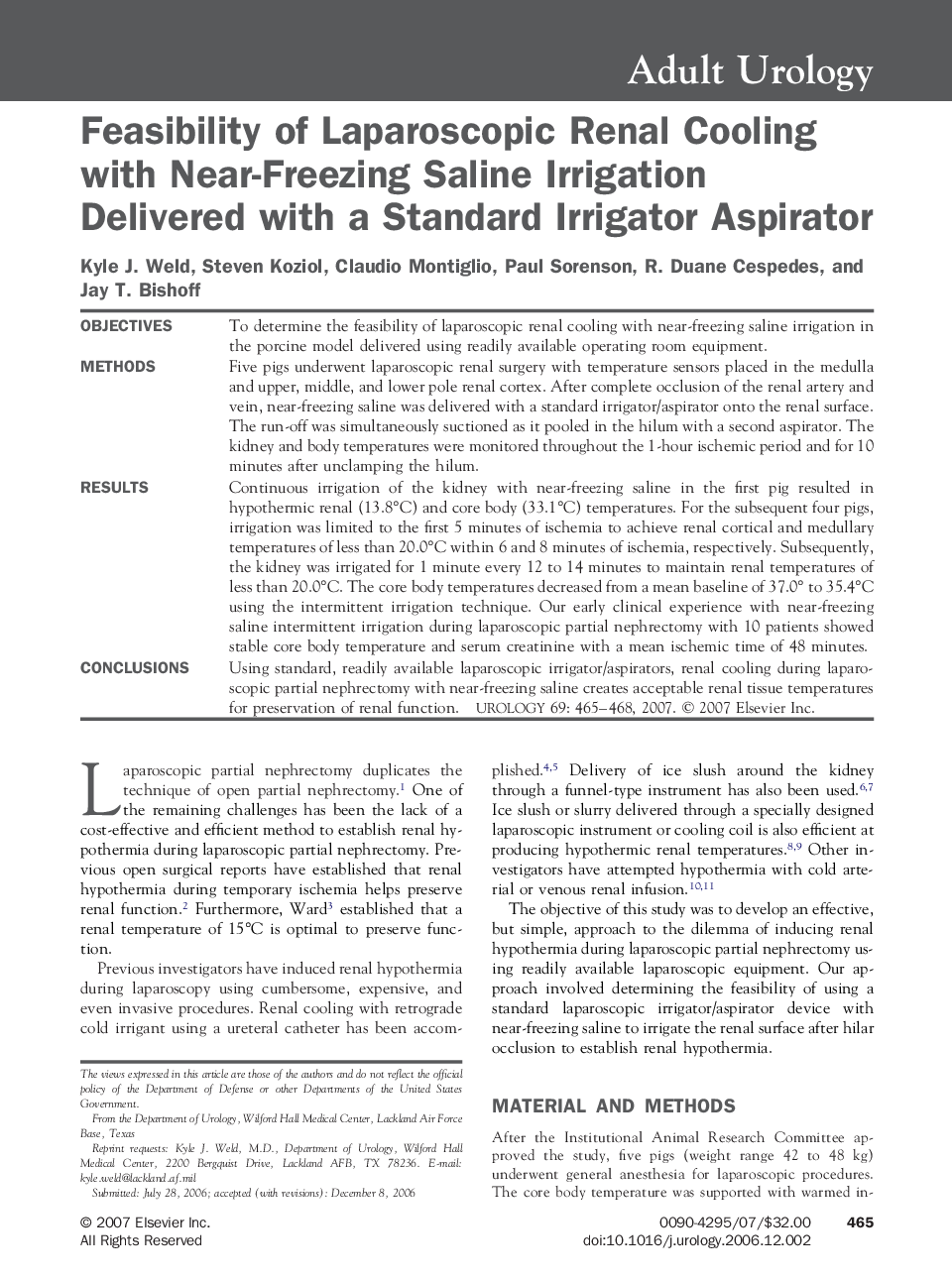| Article ID | Journal | Published Year | Pages | File Type |
|---|---|---|---|---|
| 3906377 | Urology | 2007 | 4 Pages |
ObjectivesTo determine the feasibility of laparoscopic renal cooling with near-freezing saline irrigation in the porcine model delivered using readily available operating room equipment.MethodsFive pigs underwent laparoscopic renal surgery with temperature sensors placed in the medulla and upper, middle, and lower pole renal cortex. After complete occlusion of the renal artery and vein, near-freezing saline was delivered with a standard irrigator/aspirator onto the renal surface. The run-off was simultaneously suctioned as it pooled in the hilum with a second aspirator. The kidney and body temperatures were monitored throughout the 1-hour ischemic period and for 10 minutes after unclamping the hilum.ResultsContinuous irrigation of the kidney with near-freezing saline in the first pig resulted in hypothermic renal (13.8°C) and core body (33.1°C) temperatures. For the subsequent four pigs, irrigation was limited to the first 5 minutes of ischemia to achieve renal cortical and medullary temperatures of less than 20.0°C within 6 and 8 minutes of ischemia, respectively. Subsequently, the kidney was irrigated for 1 minute every 12 to 14 minutes to maintain renal temperatures of less than 20.0°C. The core body temperatures decreased from a mean baseline of 37.0° to 35.4°C using the intermittent irrigation technique. Our early clinical experience with near-freezing saline intermittent irrigation during laparoscopic partial nephrectomy with 10 patients showed stable core body temperature and serum creatinine with a mean ischemic time of 48 minutes.ConclusionsUsing standard, readily available laparoscopic irrigator/aspirators, renal cooling during laparoscopic partial nephrectomy with near-freezing saline creates acceptable renal tissue temperatures for preservation of renal function.
